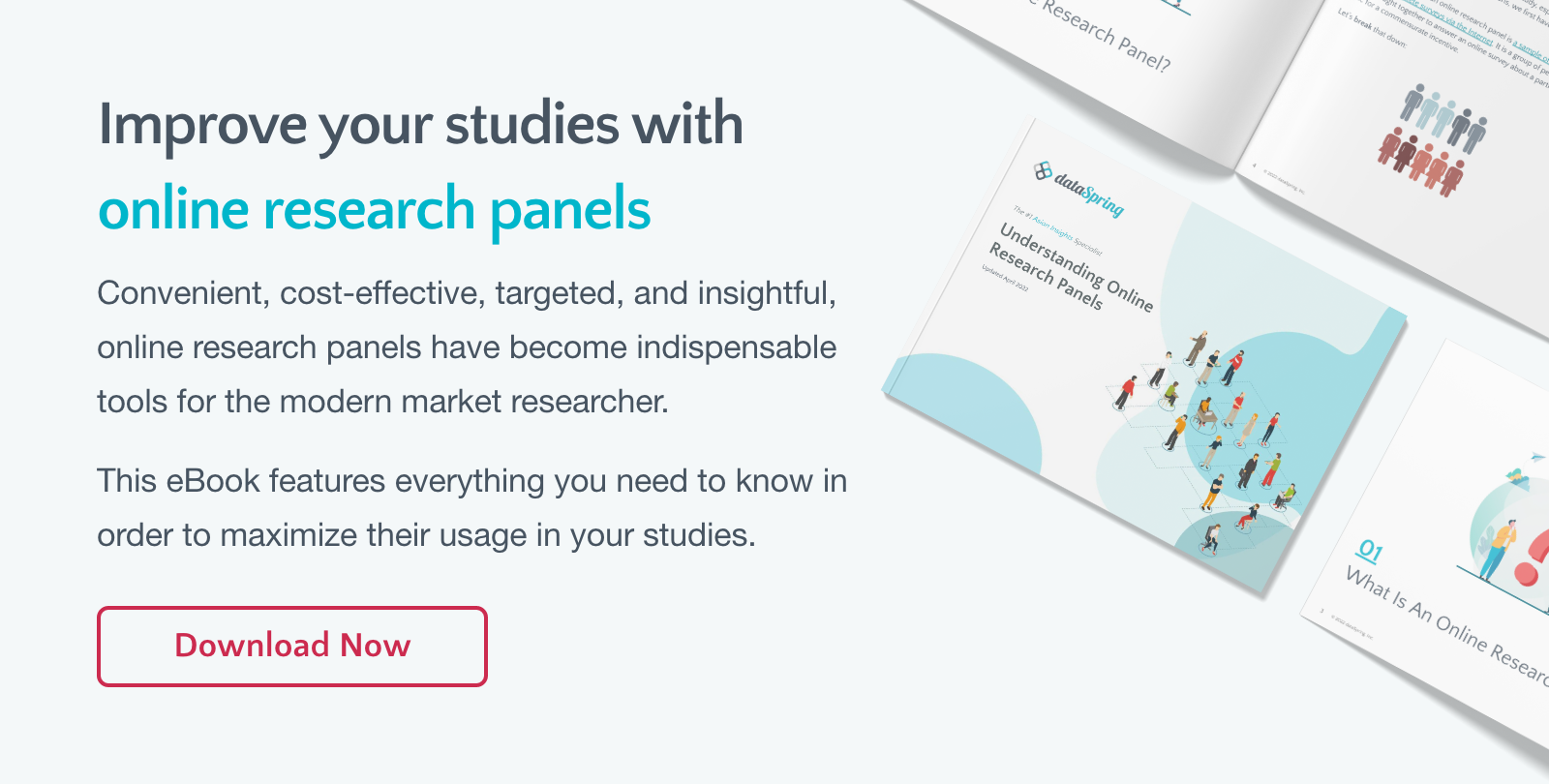For years, panel research has been an indispensable pillar of market research and its role in shaping our understanding of society cannot be overstated. However, as the amount of data available rapidly grows, it's becoming clear that traditional research methods are no longer efficient. Fortunately, the advent of artificial intelligence (AI) has brought in new opportunities to enhance data collection and analysis that will drive better research outcomes.
The Power of AI and Machine Learning in Panel Research
The introduction of AI tools such as ChatGPT and Midjourney has provoked both astonishment and outrage with their capabilities. The outrage is mainly triggered by the fear of people whose employment is based on the very skill that these tools are providing with their workmanlike ability, while people from the education sector lament the effect of these tools on students and their effort in their academics. This rise of new AI tools may be a cause of concern collectively as we are still trying to figure out how to regulate and work with it, however, for researchers there are many reasons to be optimistic about the AI revolution.
To put it briefly, tools or platforms that harness Artificial Intelligence (AI) and machine learning leverage advanced algorithms and statistical techniques that can quickly and accurately process vast amounts of data. From this perspective, it's a great assistant tool when conducting research instead of relying wholly upon its process in performing tasks. Here are some ways that AI can be used to enhance data collection and analysis in panel research, ultimately alleviating some of the biggest obstacles in survey research:
Data cleaning and preparation
Poor data leads to poor insights. Faulty data are inconsistent and often lead to failure to meet goals. On the other hand, cleaning datasets could take up a lot of time. and that is how AI and machine learning can be essential in this stage and can take over, as they can remove inconsistencies and errors that may affect the accuracy of the analysis, saving researchers time. They can be trained to identify inconsistencies and errors in datasets and automatically correct or remove them. Automation also guarantees standardized data that in many cases allows the integration of third-party apps easily, which could be helpful for enterprises in marketing or healthcare.
Predictive Analytics
Traditional panel research identifies trends and relationships by monitoring changes in attitudes and behaviors. However, this predictive analysis is limited as it bases its predictions about future behavior using past behavior. On the other hand, AI-based analytics can identify complex patterns and make accurate predictions, and provide in-depth insight based on large volumes of data. AI can cover various aspects of the business world, and for many, it also improves conversion rates in ways one might never expect before, such as price optimization and product recommendations. AI for marketing is also used for content curation and personalizing a user's feeds. In a short period, it has proven itself as the most efficient analytics method in all aspects of the sales funnel and business processes by consuming data gathered and spotting patterns, making predictions, and providing in-depth insight into what customers want and need.
Panel providers leveraged online platforms such as social media, email, SMS, and website when reaching out to and recruiting participants from diverse communities. After all, whatever the subject of academic research may be, there are people who are discussing it online. Aside from eligibility criteria, a participant's anonymity to those who are reluctant to disclose their identity is also offered. This way, they can still participate in surveys and share their perspectives.
Sentiment Analysis
Sentiment analysis is the process of identifying and categorizing opinions expressed in text or speech as positive, negative, or neutral. This was done manually before by human coders, which can be time-consuming, subjective, and prone to errors. Researchers can now automate this process with AI-based sentiment analysis. It can analyze large volumes of data or text data from various sources from social media, online reviews, and surveys to identify sentiment and provide insight into how people feel about certain products, services, or issues. Moreover, by using natural language (NPL) techniques it takes into account the context and tone of the language. The categorizing sentiment expressed accurately, for example, sarcasm or irony.
Image and Video Analysis
With data being sourced out seemingly from both online and offline today, researchers need to be agile with the amount of visual content every day, and going with the traditional manual coding would only be inadequate for this kind of task. With the continuous development of AI-powered image and video analysis, this can be automated and provide more accurate results on a large scale, providing insights from audience behavior to emotional responses.
Real-time Analysis
Informed decision-making is important in maintaining quality and preventing issues for businesses and the quick transformation for industries to go from analog to digital has made way for the growing need for real-time situational awareness and insights. This is where real-time analysis of AI is becoming increasingly important -- in how to make sense of the acquired information to take action and prevent any issue to escalate. For panel research, real-time AI can help in managing panels by managing the panelist recruitment process, ensuring that panelists are engaged and motivated to participate, and monitoring the feedback in real time. Past behavior can also be analyzed and preferences to help personalize the research experience of the panelists could help improve retention rates. Researchers can also improve the targeting of their studies by predicting panelist behavior, preferences, and responses.
So in conclusion, AI and machine learning are revolutionizing the way panel research is conducted. Automating all the manual tasks from data cleaning to analysis that can save researchers time, increase accuracy, and gain deeper insights into their data.
For researchers conducting a panel research study in Asia, these relatively new AI-powered tools can be incredibly valuable considering how wide the region is and local language and cultural context is one of the main factors to consider to yield credible insights.
dataSpring can provide the expertise and resources needed for you to conduct successful panel research studies in the region, leveraging the power of AI and machine learning to gain rich insights from customer behavior and preferences. To know more about us you can download our 2023 Panel Book or you can contact us now to learn more!



 Download Panel Book
Download Panel Book


